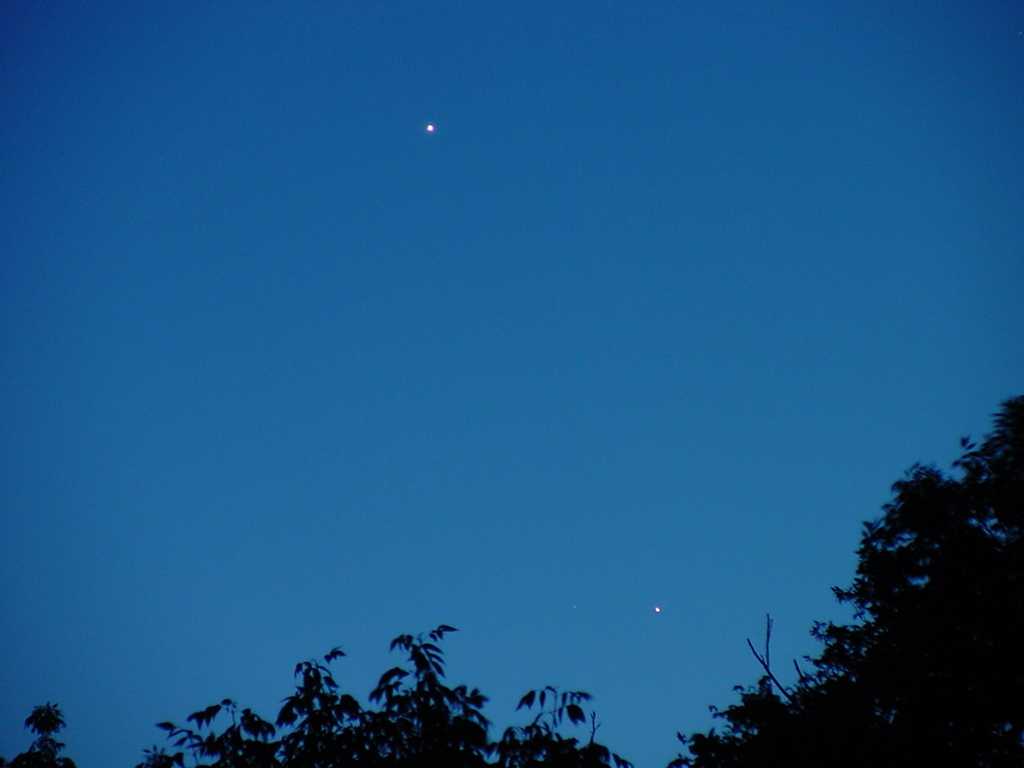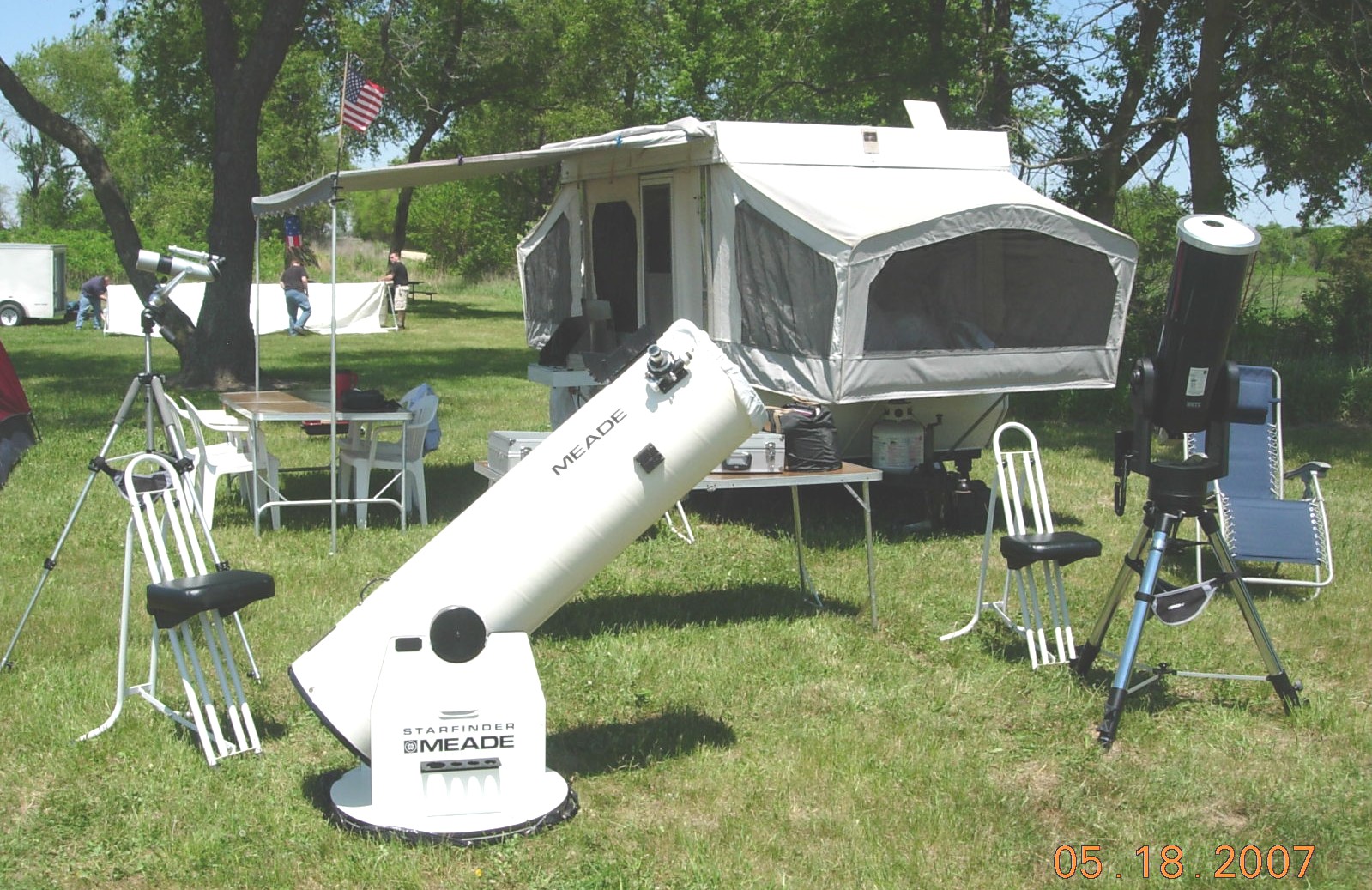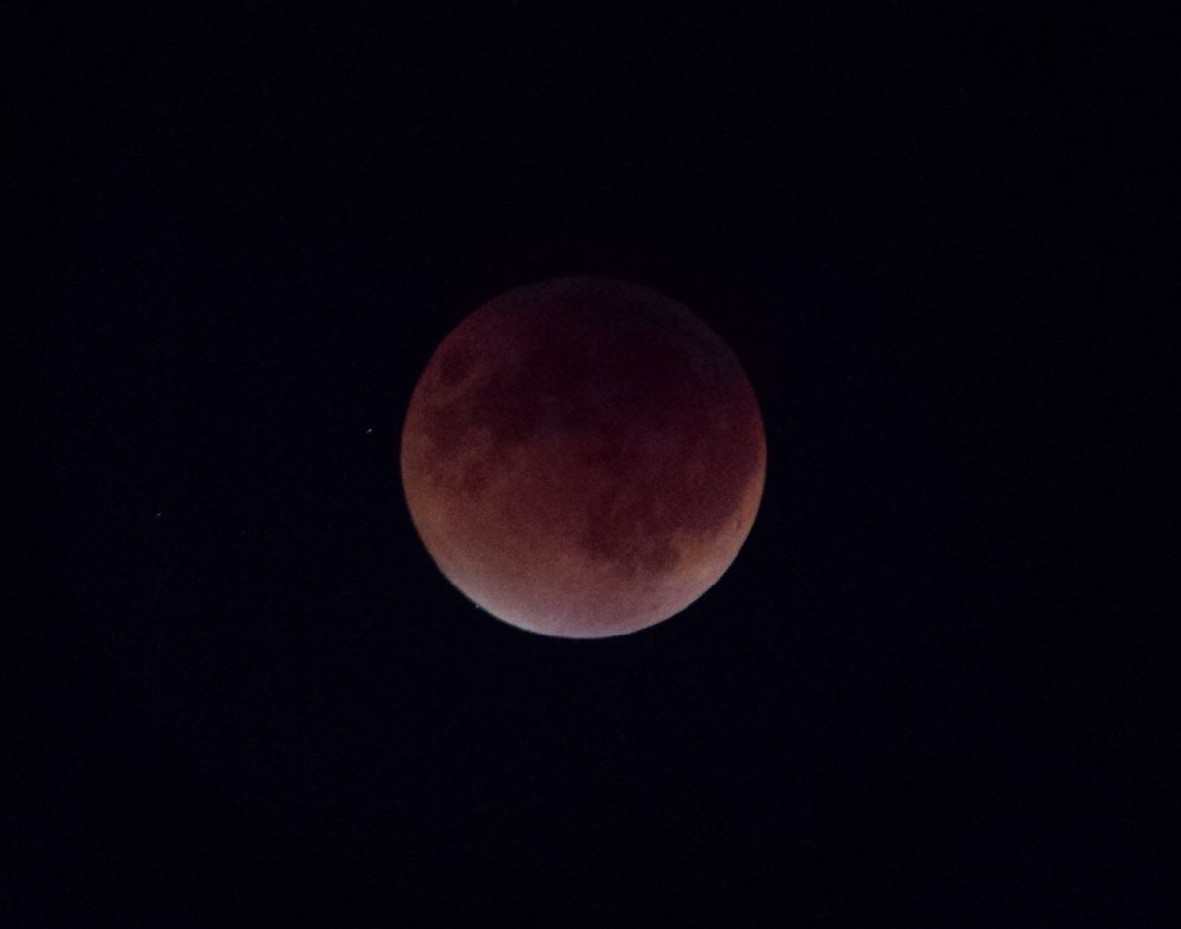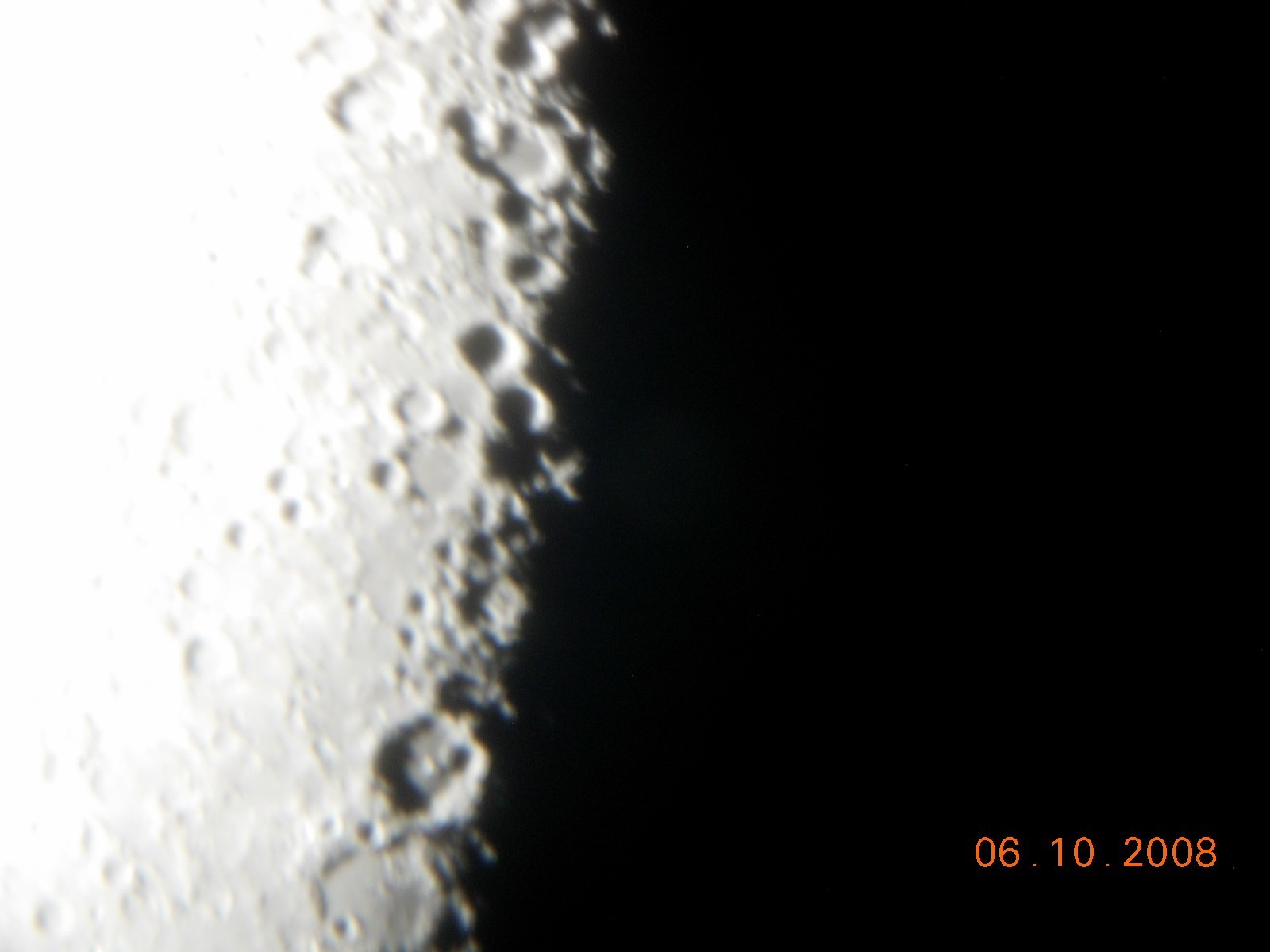 |
Jeff's Driveway Astronomy Page
|
|||||||||||||||||||||||||||||||||||||||||||||||||||||||||||||||||||||||||||||||||||||||||||||||||||||||||||||||||||||||||||||||||||||||||||||||||||||||||||||||||||||||||||||||||||||||||||||||||||||||||||||||||||||||||||||||||||||||||||||||||||||||||||||||||||||||||||||||||||||||||||||||||||||||||||
 |
||||||||||||||||||||||||||||||||||||||||||||||||||||||||||||||||||||||||||||||||||||||||||||||||||||||||||||||||||||||||||||||||||||||||||||||||||||||||||||||||||||||||||||||||||||||||||||||||||||||||||||||||||||||||||||||||||||||||||||||||||||||||||||||||||||||||||||||||||||||||||||||||||||||||||||
|
Hi
there, my name is Jeff, and welcome to my
"Driveway
Astronomy Page"
|
||||||||||||||||||||||||||||||||||||||||||||||||||||||||||||||||||||||||||||||||||||||||||||||||||||||||||||||||||||||||||||||||||||||||||||||||||||||||||||||||||||||||||||||||||||||||||||||||||||||||||||||||||||||||||||||||||||||||||||||||||||||||||||||||||||||||||||||||||||||||||||||||||||||||||||
|
|
||||||||||||||||||||||||||||||||||||||||||||||||||||||||||||||||||||||||||||||||||||||||||||||||||||||||||||||||||||||||||||||||||||||||||||||||||||||||||||||||||||||||||||||||||||||||||||||||||||||||||||||||||||||||||||||||||||||||||||||||||||||||||||||||||||||||||||||||||||||||||||||||||||||||||||
|
One of my hobbies is amateur astronomy. I am a member of the Chicago Astronomical Society and a
member of the Fox Valley Astronomical Society.
You can usually find me at these two club's Public Observing Sessions
with one of my telescopes, showing the public some of the wonderful objects in the
night sky!!
If you live in the Chicagoland Area and are interested in astronomy, visit the web sites of both of these clubs and plan to attend one or more of their Public Observing Sessions.
(They're usually free and you don't need to own a telescope to attend!)
See
below for a list of the upcoming Public Observing Sessions and more great astronomy information!
I also participate in the SWAOG
(South West Astronomy Observers Group)'s
weekly Amateur Radio
Astronomy Net and
observing events.
Ham Radio & Scanner Operators:
Listen and check in to the Southwest Astronomy Observers Group Ham Radio Information Net on Thursday evenings
at 8:30 PM on the DARC Repeater
(145.430 MHz. / -600 KHz. / 107.2 Hz. PL) and tell them that you heard about the net here! (Scanner operators can check in via e-mail)
- - - - - - - - - - - - - - - - - - - - - - - - - - - - - - -
- - - - - - - - - - - - - - - - - - - - - - - - - - -
- - - - - - - - - - - - - - - - - - - - - - - - - - - - - - -
- - - - - - - - - - - - - - - - - - - - - - - - - - -
|
||||||||||||||||||||||||||||||||||||||||||||||||||||||||||||||||||||||||||||||||||||||||||||||||||||||||||||||||||||||||||||||||||||||||||||||||||||||||||||||||||||||||||||||||||||||||||||||||||||||||||||||||||||||||||||||||||||||||||||||||||||||||||||||||||||||||||||||||||||||||||||||||||||||||||||
|
Upcoming Public Observing Sessions:
Public
Observing Sessions or 'Public Star Parties' are events where various Astronomy
Club members set up their telescopes for the public to look through.
You'll see several different types & designs of telescopes, and some of
the nicer objects in the night sky at these events. If you would
like to learn more about astronomy, plan on attending as many of these
sessions as you can . . . especially if you're thinking about purchasing a
telescope!!
~~~~~~~~~~~~~~~~~~~~~~~~~~~~~~~~~~~~~~~~~~~~~~~~~~~~~~~~~~~~~~~~~~~~~~~~~~~~~~~~~~~~~~~~
|
||||||||||||||||||||||||||||||||||||||||||||||||||||||||||||||||||||||||||||||||||||||||||||||||||||||||||||||||||||||||||||||||||||||||||||||||||||||||||||||||||||||||||||||||||||||||||||||||||||||||||||||||||||||||||||||||||||||||||||||||||||||||||||||||||||||||||||||||||||||||||||||||||||||||||||
|
Upcoming
Fox Valley Astronomical Society Public Star Parties are listed HERE
4038
Kaneville Rd., Geneva, IL (free
- sponsored by the Fox
Valley Astronomical Society click
for info & directions)
~~~~~~~~~~~~~~~~~~~~~~~~~~~~~~~~~~~~~~~~~~~~~~~~~~~~~~~~~~~~~~~~~~~~~~~~~~~~~~~~~~~~~
|
||||||||||||||||||||||||||||||||||||||||||||||||||||||||||||||||||||||||||||||||||||||||||||||||||||||||||||||||||||||||||||||||||||||||||||||||||||||||||||||||||||||||||||||||||||||||||||||||||||||||||||||||||||||||||||||||||||||||||||||||||||||||||||||||||||||||||||||||||||||||||||||||||||||||||||
|
Friday,
May 17 & Friday, September 13th, 2024
at - Heritage
Park in Homer Glen -
8:00 PM to 10:00 PM Observing
14240 W. 151st Street
- Homer Township,
IL (free
- sponsored by Homer Township)
(held
at Homer Glen's new location - Heritage Park )
~~~~~~~~~~~~~~~~~~~~~~~~~~~~~~~~~~~~~~~~~~~~~~~~~~~~~~~~~~~~~~~~~~~~~~~~~~~~~~~~~~~~~
|
||||||||||||||||||||||||||||||||||||||||||||||||||||||||||||||||||||||||||||||||||||||||||||||||||||||||||||||||||||||||||||||||||||||||||||||||||||||||||||||||||||||||||||||||||||||||||||||||||||||||||||||||||||||||||||||||||||||||||||||||||||||||||||||||||||||||||||||||||||||||||||||||||||||||||||
|
Public
viewing sessions have resumed. Check
their web page for more info!
-
2000
Fifth Avenue, River Grove, IL (1/2
mile north of North Avenue on Fifth Avenue)
(provided by the
Chicago
Astronomical Society
and Cernan staff)
~~~~~~~~~~~~~~~~~~~~~~~~~~~~~~~~~~~~~~~~~~~~~~~~~~~~~~~~~~~~~~~~~~~~~~~~~~~~~~~~~~~~~~~~
|
||||||||||||||||||||||||||||||||||||||||||||||||||||||||||||||||||||||||||||||||||||||||||||||||||||||||||||||||||||||||||||||||||||||||||||||||||||||||||||||||||||||||||||||||||||||||||||||||||||||||||||||||||||||||||||||||||||||||||||||||||||||||||||||||||||||||||||||||||||||||||||||||||||||||||||
|
The
Little Red Schoolhouse may have observing after their scheduled walks.
Check their web page for more info! -
The
Little Red School House -
9800
So. 104th Ave (Flavin / Willow Springs Rd.), Willow Springs,
IL (free
- sponsored by the Chicago
Astronomical Society)
~~~~~~~~~~~~~~~~~~~~~~~~~~~~~~~~~~~~~~~~~~~~~~~~~~~~~~~~~~~~~~~~~~~~~~~~~~~~~~~~~~~~~~~
|
||||||||||||||||||||||||||||||||||||||||||||||||||||||||||||||||||||||||||||||||||||||||||||||||||||||||||||||||||||||||||||||||||||||||||||||||||||||||||||||||||||||||||||||||||||||||||||||||||||||||||||||||||||||||||||||||||||||||||||||||||||||||||||||||||||||||||||||||||||||||||||||||||||||||||||
|
Stargazing
has been canceled at -
Lake
Katherine Nature Center -
We lost a dear
friend who ran the Stargazing Events - Joe Mayer - Rest in Peace Joe!
7402
Lake Katherine Drive, Palos Heights, IL 60463 -- Lake
Katherine 2016 Observing Schedule
~~~~~~~~~~~~~~~~~~~~~~~~~~~~~~~~~~~~~~~~~~~~~~~~~~~~~~~~~~~~~~~~~~~~~~~~~~~~~~~~~~~~~~~
|
||||||||||||||||||||||||||||||||||||||||||||||||||||||||||||||||||||||||||||||||||||||||||||||||||||||||||||||||||||||||||||||||||||||||||||||||||||||||||||||||||||||||||||||||||||||||||||||||||||||||||||||||||||||||||||||||||||||||||||||||||||||||||||||||||||||||||||||||||||||||||||||||||||||||||||
|
Take
a copy of the monthly sky map with you when you go observing -- go to www.Skymaps.com and download a free copy of their monthly sky chart.
And...
make sure you take your binoculars and a copy of Jeff's Monthly Binocular Objects
with you,
too!
|
||||||||||||||||||||||||||||||||||||||||||||||||||||||||||||||||||||||||||||||||||||||||||||||||||||||||||||||||||||||||||||||||||||||||||||||||||||||||||||||||||||||||||||||||||||||||||||||||||||||||||||||||||||||||||||||||||||||||||||||||||||||||||||||||||||||||||||||||||||||||||||||||||||||||||||
|
Total Solar Eclipse - April 8, 2024 -----------------------------------------------------------------------------------------------------------
Comet PanSTARRS - March 21, 2013
|
||||||||||||||||||||||||||||||||||||||||||||||||||||||||||||||||||||||||||||||||||||||||||||||||||||||||||||||||||||||||||||||||||||||||||||||||||||||||||||||||||||||||||||||||||||||||||||||||||||||||||||||||||||||||||||||||||||||||||||||||||||||||||||||||||||||||||||||||||||||||||||||||||||||||||||
|
The Moon! |
||||||||||||||||||||||||||||||||||||||||||||||||||||||||||||||||||||||||||||||||||||||||||||||||||||||||||||||||||||||||||||||||||||||||||||||||||||||||||||||||||||||||||||||||||||||||||||||||||||||||||||||||||||||||||||||||||||||||||||||||||||||||||||||||||||||||||||||||||||||||||||||||||||||||||||
 |
||||||||||||||||||||||||||||||||||||||||||||||||||||||||||||||||||||||||||||||||||||||||||||||||||||||||||||||||||||||||||||||||||||||||||||||||||||||||||||||||||||||||||||||||||||||||||||||||||||||||||||||||||||||||||||||||||||||||||||||||||||||||||||||||||||||||||||||||||||||||||||||||||||||||||||
 |
||||||||||||||||||||||||||||||||||||||||||||||||||||||||||||||||||||||||||||||||||||||||||||||||||||||||||||||||||||||||||||||||||||||||||||||||||||||||||||||||||||||||||||||||||||||||||||||||||||||||||||||||||||||||||||||||||||||||||||||||||||||||||||||||||||||||||||||||||||||||||||||||||||||||||||
|
Pictures of a few phases of the September 27th, 2015 Lunar
Eclipse
BlackBerry Z-10 Smart Phone Camera help up to a Tele-Vue 8-24
Zoom Eyepiece in a Borg 76mm ED Refractor Telescope
~~~~~~~~~~~~~~~~~~~~~~~~~~~~~~~~~~~~~~~~~~~~~~~~~~~~~~~~~~~~~~~~~~~~~~~~~~
The picture on the left was taken
using a Sony Mavica MVC-FD81 Digital Camera held up to a
40mm eyepiece (a-focal coupling) of my Meade LX10 8" Schmidt-Cassegrain Telescope
producing 50 power. The bluish tint was from an
Orion Variable-Polarizing Filter. The picture on the right was taken at much higher
power, around 200x, with no filter, along what's known as the 'terminator'
(notice the crater within the
crater) Click
Here to
visit my Driveway Astronomy Pictures Page for more Astronomy Pictures, and stop back periodically for new pictures & info!
February 20th, 2008 Lunar Eclipse ~~~~~~~~~~~~~~~~~~~~~~~~~~~~~~~~~~~~~~~~~~~~~~~~~~~~~~~~~~~~~~~~~~~~~~~~~~ June 10th, 2008 Lunar "X" ~~~~~~~~~~~~~~~~~~~~~~~~~~~~~~~~~~~~~~~~~~~~~~~~~~~~~~~~~~~~~~~~~~~~~~~~~~
March 22nd, 2010 Lunar "X" Want to learn more about the Lunar "X" ? CLICK HERE! ~~~~~~~~~~~~~~~~~~~~~~~~~~~~~~~~~~~~~~~~~~~~~~~~~~~~~~~~~~~~~~~~~~~~~~~~~~ Lunar-X / March 1st, 2020 Cell Phone camera held up to 18mm Kellner eyepiece of my 'Deck-Dob' (4.5-inch F/8 Reflector) ~~~~~~~~~~~~~~~~~~~~~~~~~~~~~~~~~~~~~~~~~~~~~~~~~~~~~~~~~~~~~~~~~~~~~~~~~~
|
||||||||||||||||||||||||||||||||||||||||||||||||||||||||||||||||||||||||||||||||||||||||||||||||||||||||||||||||||||||||||||||||||||||||||||||||||||||||||||||||||||||||||||||||||||||||||||||||||||||||||||||||||||||||||||||||||||||||||||||||||||||||||||||||||||||||||||||||||||||||||||||||||||||||||||
CLICK HERE to download a copy of Jeff's Monthly Binocular Objects - a few challenging objects, and several easy objects for ordinary binoculars . . . GREAT for small scopes, too!
~ ~ ~ ~ ~ ~ ~ ~ ~ ~ ~ ~ ~ ~ ~ ~ ~ ~ ~ ~ ~ ~ ~ ~ ~ ~ ~ ~ ~ ~ ~ ~ ~ ~ ~ ~ ~
Major Meteor Showers in 2024
* Moonlight will wash out fainter meteors in these showers. Bold Shower Names indicate the best predicted Meteor Showers! The meteor showers listed above are the easiest to observe and provide the most activity. Particular attention should be noted to the time and moonlight conditions. All these showers are best seen after midnight. Some are not even visible until after midnight. Showers that peak with the moon's age between 10 and 20 days will be affected by moonlight and difficult to observe this year. While the time each shower is best seen remains much the same year after year, the moonlight conditions change considerably from one year to the next. Please use the form found HERE from the American Meteor Society to report any Meteors that you see. Instructions on how to complete the form can be found HERE. Moon Phases for Lombard, Illinois, USA in 2024
|
||||||||||||||||||||||||||||||||||||||||||||||||||||||||||||||||||||||||||||||||||||||||||||||||||||||||||||||||||||||||||||||||||||||||||||||||||||||||||||||||||||||||||||||||||||||||||||||||||||||||||||||||||||||||||||||||||||||||||||||||||||||||||||||||||||||||||||||||||||||||||||||||||||||||||||
|
|
Observing Events and Programs that YOU can participate in... (You won't need a fancy telescope or even binoculars - just your eyes!) |
|
||||||||||||||||||||||||||||||||||||||||||||||||||||||||||||||||||||||||||||||||||||||||||||||||||||||||||||||||||||||||||||||||||||||||||||||||||||||||||||||||||||||||||||||||||||||||||||||||||||||||||||||||||||||||||||||||||||||||||||||||||||||||||||||||||||||||||||||||||||||||||||||||||||||||||
|
|
~ ~ ~ ~ ~ ~ ~ ~ ~ ~ ~ ~ ~ ~ ~ ~ ~ ~ ~ ~ ~ ~ ~ ~ ~ ~ ~ ~ ~ ~ ~ ~ ~ ~ ~ ~ ~ GLOBE AT NIGHT - constellations & dates in 2023
*** ORION *** January 13 - 22 February 12 - 21 *** GEMINI *** March 1 3 - 22 *** LEO *** April 12 - 21 & May 11 - 20 *** BOOTES *** June 9 - 18 & July 8 - 17 *** HERCULES *** August 7 - 16 *** CYGNUS *** September 5 - 14 & October 4 - 13 *** PEGASUS *** November 3 - 12 & December 3 - 12
The GLOBE at Night program is an international citizen-science campaign to raise public awareness of the impact of light pollution by inviting citizen-scientists to measure their night sky brightness and submit their observations to a website from a computer or smart phone. Light pollution threatens not only our “right to starlight”, but can affect energy consumption, wildlife and health. The GLOBE at Night campaign has run for two weeks each winter/spring for the last six years. People in 115 countries have contributed 66,000 measurements, making GLOBE at Night one of the most successful light pollution awareness campaigns. Check out the new web application data submission process. The GLOBE at Night website is easy to use, comprehensive and holds an abundance of background information. The database is usable for comparisons with a variety of other databases, like how light pollution affects the foraging habits of bats. Once again the GLOBE at Night Team would like to express their thanks to all the participants who contributed measurements locally to make a global difference.
Globe at Night measurement reporting period has started, check the Globe at Night Reporting web site for the results!
~ ~ ~ ~ ~ ~ ~ ~ ~ ~ ~ ~ ~ ~ ~ ~ ~ ~ ~ ~ ~ ~ ~ ~ ~ ~ ~ ~ ~ ~ ~ ~ ~ ~ ~ ~ ~
Lights Out / Earth Hour - Saturday, March 23, 2024 / 8:30-9:30 PM Local time! Switch off all your lights for one hour at 8:30 Local Time. On Earth Hour hundreds of millions of people, organizations, corporations and governments around the world will come together to make a bold statement about their concern for climate change by doing something quite simple—turning off their lights for one hour. In the U.S. where we are already feeling the impacts of climate change, Earth Hour sends a clear message that Americans care about this issue and want to turn the lights out on dirty air, dangerous dependency on foreign oil and costly climate change impacts, and make the switch to cleaner air, a strong economic future and a more secure nation. Participation is easy. By flipping off your lights on at 8:30 p.m. local time you will be making the switch to a cleaner, more secure nation and prosperous America. Find out what else you can do to get involved including leading the Earth Hour movement in your community. ~ ~ ~ ~ ~ ~ ~ ~ ~ ~ ~ ~ ~ ~ ~ ~ ~ ~ ~ ~ ~ ~ ~ ~ ~ ~ ~ ~ ~ ~ ~ ~ ~ ~ ~ ~ ~
|
|
||||||||||||||||||||||||||||||||||||||||||||||||||||||||||||||||||||||||||||||||||||||||||||||||||||||||||||||||||||||||||||||||||||||||||||||||||||||||||||||||||||||||||||||||||||||||||||||||||||||||||||||||||||||||||||||||||||||||||||||||||||||||||||||||||||||||||||||||||||||||||||||||||||||||||
|
|
My Favorite Objects include:
The
Moon, the planets Jupiter, Saturn, Uranus and Neptune, the
Dumbbell Nebula (M27),
M29 - the cooling tower cluster, the Ring Nebula (M57),
the M3 globular cluster in Canes Venatici, the Hercules Cluster (M13), the A/B Cluster (IC-4665), the
Veil Nebula (NGC 6960
& 6992) the Coathanger (Brocchi's Cluster - Cr 399), the M81/M82 galaxy pair, the
Swan Nebula (M17), the "ET" Cluster (NGC
457),
the 'Mini Dipper' (M103), and the
Great Orion Nebula (M42)
And....
M51 in the MallinCam!!
|
|
||||||||||||||||||||||||||||||||||||||||||||||||||||||||||||||||||||||||||||||||||||||||||||||||||||||||||||||||||||||||||||||||||||||||||||||||||||||||||||||||||||||||||||||||||||||||||||||||||||||||||||||||||||||||||||||||||||||||||||||||||||||||||||||||||||||||||||||||||||||||||||||||||||||||||
|
Other Driveway Astronomy Observers:
*
My friend Randy came out to observe from my driveway with his new Meade ETX-125 AutoStar scope!
*
My friend Mary Alice comes out to observe from my driveway with her keen eyes, and her Orion XT-10 Dob!
* Mark - KB9WLX, of the SWAOG, has also observed from
my driveway with his Meade LX-90 SCT 'GO TO' Scope!
* Pete & "Re-Pete" came out to observe from
my driveway and
to check out my new LX-90!
*
My friend Doug was out with his Celestron 8-inch Dobsonian Reflector
*
Dave - KC9KPQ came out on June 2nd to observe through my new PST solar
telescope
|
||||||||||||||||||||||||||||||||||||||||||||||||||||||||||||||||||||||||||||||||||||||||||||||||||||||||||||||||||||||||||||||||||||||||||||||||||||||||||||||||||||||||||||||||||||||||||||||||||||||||||||||||||||||||||||||||||||||||||||||||||||||||||||||||||||||||||||||||||||||||||||||||||||||||||||
|
Tip for anyone interested in starting out in astronomy:
Start with a set of binoculars & a seasonal star chart and learn some of the major stars & constellations to help you
navigate your way around the night sky. SkyMaps.com, Sky & Telescope Magazine, and Astronomy
Magazine
have excellent monthly star charts.
A good set of binoculars will remain an important observing aid no matter how far you advance in astronomy!
(CLICK HERE for a list of interesting binocular objects)
Attend as many different club's Public Star Parties as you can, and check out all the different types of telescopes before purchasing one.
Also, read the information provided in this Sky & Telescope "How To" section for
beginners, this Learning
Center resource site, and this web
site.
|
||||||||||||||||||||||||||||||||||||||||||||||||||||||||||||||||||||||||||||||||||||||||||||||||||||||||||||||||||||||||||||||||||||||||||||||||||||||||||||||||||||||||||||||||||||||||||||||||||||||||||||||||||||||||||||||||||||||||||||||||||||||||||||||||||||||||||||||||||||||||||||||||||||||||||||
|
Items
for sale:
I
have a couple of astronomy-related items for sale:
a
|
||||||||||||||||||||||||||||||||||||||||||||||||||||||||||||||||||||||||||||||||||||||||||||||||||||||||||||||||||||||||||||||||||||||||||||||||||||||||||||||||||||||||||||||||||||||||||||||||||||||||||||||||||||||||||||||||||||||||||||||||||||||||||||||||||||||||||||||||||||||||||||||||||||||||||||
|
Astronomy Conventions / Star Parties!
|
||||||||||||||||||||||||||||||||||||||||||||||||||||||||||||||||||||||||||||||||||||||||||||||||||||||||||||||||||||||||||||||||||||||||||||||||||||||||||||||||||||||||||||||||||||||||||||||||||||||||||||||||||||||||||||||||||||||||||||||||||||||||||||||||||||||||||||||||||||||||||||||||||||||||||||
 |
||||||||||||||||||||||||||||||||||||||||||||||||||||||||||||||||||||||||||||||||||||||||||||||||||||||||||||||||||||||||||||||||||||||||||||||||||||||||||||||||||||||||||||||||||||||||||||||||||||||||||||||||||||||||||||||||||||||||||||||||||||||||||||||||||||||||||||||||||||||||||||||||||||||||||||
|
2007 Boot Leg Astronomer's Star Party
|
||||||||||||||||||||||||||||||||||||||||||||||||||||||||||||||||||||||||||||||||||||||||||||||||||||||||||||||||||||||||||||||||||||||||||||||||||||||||||||||||||||||||||||||||||||||||||||||||||||||||||||||||||||||||||||||||||||||||||||||||||||||||||||||||||||||||||||||||||||||||||||||||||||||||||||
 |
||||||||||||||||||||||||||||||||||||||||||||||||||||||||||||||||||||||||||||||||||||||||||||||||||||||||||||||||||||||||||||||||||||||||||||||||||||||||||||||||||||||||||||||||||||||||||||||||||||||||||||||||||||||||||||||||||||||||||||||||||||||||||||||||||||||||||||||||||||||||||||||||||||||||||||
|
Epoch 2007
|
||||||||||||||||||||||||||||||||||||||||||||||||||||||||||||||||||||||||||||||||||||||||||||||||||||||||||||||||||||||||||||||||||||||||||||||||||||||||||||||||||||||||||||||||||||||||||||||||||||||||||||||||||||||||||||||||||||||||||||||||||||||||||||||||||||||||||||||||||||||||||||||||||||||||||||
 |
||||||||||||||||||||||||||||||||||||||||||||||||||||||||||||||||||||||||||||||||||||||||||||||||||||||||||||||||||||||||||||||||||||||||||||||||||||||||||||||||||||||||||||||||||||||||||||||||||||||||||||||||||||||||||||||||||||||||||||||||||||||||||||||||||||||||||||||||||||||||||||||||||||||||||||
|
2007 Prairie Skies Star Party
|
||||||||||||||||||||||||||||||||||||||||||||||||||||||||||||||||||||||||||||||||||||||||||||||||||||||||||||||||||||||||||||||||||||||||||||||||||||||||||||||||||||||||||||||||||||||||||||||||||||||||||||||||||||||||||||||||||||||||||||||||||||||||||||||||||||||||||||||||||||||||||||||||||||||||||||
 |
||||||||||||||||||||||||||||||||||||||||||||||||||||||||||||||||||||||||||||||||||||||||||||||||||||||||||||||||||||||||||||||||||||||||||||||||||||||||||||||||||||||||||||||||||||||||||||||||||||||||||||||||||||||||||||||||||||||||||||||||||||||||||||||||||||||||||||||||||||||||||||||||||||||||||||
|
2008 Astrofest Star Party
|
||||||||||||||||||||||||||||||||||||||||||||||||||||||||||||||||||||||||||||||||||||||||||||||||||||||||||||||||||||||||||||||||||||||||||||||||||||||||||||||||||||||||||||||||||||||||||||||||||||||||||||||||||||||||||||||||||||||||||||||||||||||||||||||||||||||||||||||||||||||||||||||||||||||||||||
|
Above are pictures of my campsites at
the 2007 Boot Leg Astronomer's, Epoch 2007, the 2007 Prairie Skies Star Party,
and Astrofest 2008. With me at these events were friends Doug, Dave - KC9KPQ,
Don-KB9SWI, Scanner Chuck, Mark -
KC9DSN & his Daughter Amy, Doug, John - KN9R, Sergio - AK9S & Mike
I
had a fabulous time at all of these events, and look forward to the next one!
CLICK
HERE for a report on the Boot Leg Astronomer's Star Party.
Click Here for a report on Astrofest 2007 from the President of the Sheboygan A/S 2023
Astronomy Convention / Star Party Dates
* * * 2023 Bootleg SPRING Star Party Dates: May 18-21 * * * * * * 2023 Michiana Star Party Dates: TBD * * * ** * * 2023 Bootleg FALL Star Party Dates: Sept 14-17 * * * * * * 2023 Wisconsin Observers Weekend (WOW) Dates: TBD * * * * * *
2023 Astrofest
Dates - TBD * * * *
* * No Prairie Skies
Star Party - they lost the site
|
||||||||||||||||||||||||||||||||||||||||||||||||||||||||||||||||||||||||||||||||||||||||||||||||||||||||||||||||||||||||||||||||||||||||||||||||||||||||||||||||||||||||||||||||||||||||||||||||||||||||||||||||||||||||||||||||||||||||||||||||||||||||||||||||||||||||||||||||||||||||||||||||||||||||||||
|
Handy Astronomy Links:
SkyMaps.Com (free copy of monthly sky map)
|
||||||||||||||||||||||||||||||||||||||||||||||||||||||||||||||||||||||||||||||||||||||||||||||||||||||||||||||||||||||||||||||||||||||||||||||||||||||||||||||||||||||||||||||||||||||||||||||||||||||||||||||||||||||||||||||||||||||||||||||||||||||||||||||||||||||||||||||||||||||||||||||||||||||||||||
|
More Handy Astronomy Links:
CLICK HERE to download a copy of Jeff's Monthly Binocular Objects -
a few challenging, and several easy objects for ordinary binoculars - GREAT for small scopes, too!
|
||||||||||||||||||||||||||||||||||||||||||||||||||||||||||||||||||||||||||||||||||||||||||||||||||||||||||||||||||||||||||||||||||||||||||||||||||||||||||||||||||||||||||||||||||||||||||||||||||||||||||||||||||||||||||||||||||||||||||||||||||||||||||||||||||||||||||||||||||||||||||||||||||||||||||||
|
|
||||||||||||||||||||||||||||||||||||||||||||||||||||||||||||||||||||||||||||||||||||||||||||||||||||||||||||||||||||||||||||||||||||||||||||||||||||||||||||||||||||||||||||||||||||||||||||||||||||||||||||||||||||||||||||||||||||||||||||||||||||||||||||||||||||||||||||||||||||||||||||||||||||||||||||
 |
||||||||||||||||||||||||||||||||||||||||||||||||||||||||||||||||||||||||||||||||||||||||||||||||||||||||||||||||||||||||||||||||||||||||||||||||||||||||||||||||||||||||||||||||||||||||||||||||||||||||||||||||||||||||||||||||||||||||||||||||||||||||||||||||||||||||||||||||||||||||||||||||||||||||||||
 |
||||||||||||||||||||||||||||||||||||||||||||||||||||||||||||||||||||||||||||||||||||||||||||||||||||||||||||||||||||||||||||||||||||||||||||||||||||||||||||||||||||||||||||||||||||||||||||||||||||||||||||||||||||||||||||||||||||||||||||||||||||||||||||||||||||||||||||||||||||||||||||||||||||||||||||
|
Jupiter & 1 Moon
|
||||||||||||||||||||||||||||||||||||||||||||||||||||||||||||||||||||||||||||||||||||||||||||||||||||||||||||||||||||||||||||||||||||||||||||||||||||||||||||||||||||||||||||||||||||||||||||||||||||||||||||||||||||||||||||||||||||||||||||||||||||||||||||||||||||||||||||||||||||||||||||||||||||||||||||
|
My Ham Radio Web Page - WD9GVU's Amateur Radio Web Page
|
||||||||||||||||||||||||||||||||||||||||||||||||||||||||||||||||||||||||||||||||||||||||||||||||||||||||||||||||||||||||||||||||||||||||||||||||||||||||||||||||||||||||||||||||||||||||||||||||||||||||||||||||||||||||||||||||||||||||||||||||||||||||||||||||||||||||||||||||||||||||||||||||||||||||||||
|
Saturn
|
||||||||||||||||||||||||||||||||||||||||||||||||||||||||||||||||||||||||||||||||||||||||||||||||||||||||||||||||||||||||||||||||||||||||||||||||||||||||||||||||||||||||||||||||||||||||||||||||||||||||||||||||||||||||||||||||||||||||||||||||||||||||||||||||||||||||||||||||||||||||||||||||||||||||||||
|
|
||||||||||||||||||||||||||||||||||||||||||||||||||||||||||||||||||||||||||||||||||||||||||||||||||||||||||||||||||||||||||||||||||||||||||||||||||||||||||||||||||||||||||||||||||||||||||||||||||||||||||||||||||||||||||||||||||||||||||||||||||||||||||||||||||||||||||||||||||||||||||||||||||||||||||||
|
|
||||||||||||||||||||||||||||||||||||||||||||||||||||||||||||||||||||||||||||||||||||||||||||||||||||||||||||||||||||||||||||||||||||||||||||||||||||||||||||||||||||||||||||||||||||||||||||||||||||||||||||||||||||||||||||||||||||||||||||||||||||||||||||||||||||||||||||||||||||||||||||||||||||||||||||
|
|
||||||||||||||||||||||||||||||||||||||||||||||||||||||||||||||||||||||||||||||||||||||||||||||||||||||||||||||||||||||||||||||||||||||||||||||||||||||||||||||||||||||||||||||||||||||||||||||||||||||||||||||||||||||||||||||||||||||||||||||||||||||||||||||||||||||||||||||||||||||||||||||||||||||||||||
|
Please report any problems with this site to our |
||||||||||||||||||||||||||||||||||||||||||||||||||||||||||||||||||||||||||||||||||||||||||||||||||||||||||||||||||||||||||||||||||||||||||||||||||||||||||||||||||||||||||||||||||||||||||||||||||||||||||||||||||||||||||||||||||||||||||||||||||||||||||||||||||||||||||||||||||||||||||||||||||||||||||||
|
|
||||||||||||||||||||||||||||||||||||||||||||||||||||||||||||||||||||||||||||||||||||||||||||||||||||||||||||||||||||||||||||||||||||||||||||||||||||||||||||||||||||||||||||||||||||||||||||||||||||||||||||||||||||||||||||||||||||||||||||||||||||||||||||||||||||||||||||||||||||||||||||||||||||||||||||














